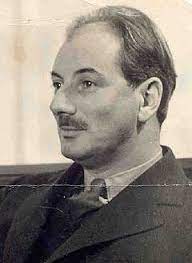Mumford, Lewis

Bio: (1895-1990) American historian, theorist of architecture, and sociologist. Lewis Mumford studied at City College of New York but never graduated due to health problems. He spent most of his professional career as a journalist for various magazines, where he wrote articles dedicated to architecture, urbanism, and several other topics, but his most important post was his 30-year tenure as the architecture critic for the New Yorker. Mumford had a great influence on history, sociology, literary criticism, the theory of urbanism and architecture, as well as on various branches of sociology. Although he had no formal sociological education, during his stay in Britain he worked closely with British sociologists Patrick Geddes and Victor Branford and even worked as a guest editor of Branford's Sociological Review. Mumford characterized his approach toward the study of society as "organic humanism." In line with that, his work was shaped by a desire to create an „organic” equilibrium in human affairs which he called “eutopia”, or the good place.
In his early work, Mumford studied how natural geographical patterns shape culture, independent of the influence of technological and economic structures and processes. The influence of the Chicago School of Sociology is visible in his commitment to convince politicians and urban planners to pay attention to how architectural and urban solutions and plans affect the social ecology of urban neighborhoods. He wanted to avoid the anomie and loss of the organic community that would result from poor planning of cities and their neighborhoods. As the biggest problems of urbanism, he saw the excessive concentration of the population in huge skyscrapers, the disappearance of public places and parks, and the excessive construction of roads and car parks. Mumford believed that technological advances in transportation and communications would lead to the proliferation of social networks and the strengthening of democracy at the regional level. In the books The Culture of Cities (1938) and The City in History (1961), Mumford explores how the development of cities, urbanism, and architecture, as well as technology, has influenced other social, cultural, and economic patterns. In the two-volume book The Myth of the Machine (1967, 1970), he warns of the possibility that technology (megamachines) and cumbersome and inadequate cities (megalopolises) can lead to failure to meet the humanistic goals of free individual human development and quality of life in the community.
Fields of research
Art City Civilization Culture Democracy Demography Economy Freedom Geography History Technology Utopia AnomyTheoretical approaches
Urbanistic ApproachMain works
The Story of Utopias (1922);
Sticks and Stones (1926);
Architecture (1926);
The Golden Day (1926);
Technics and Civilization (1934);
The Culture of Cities (1938);
Faith for Living (1940);
The South in Architecture (1941);
The Condition of Man (1944);
City Development (1945);
Values for Survival (1946);
The Conduct of Life (1951);
Art and Technics (1952);
In the Name of Sanity (1954);
The Transformations of Man (1956);
The City in History (1961);
The Highway and the City (1963);
The Myth of the Machine, 2 vols. (1967, 1970);
The Urban Prospect (1968).

